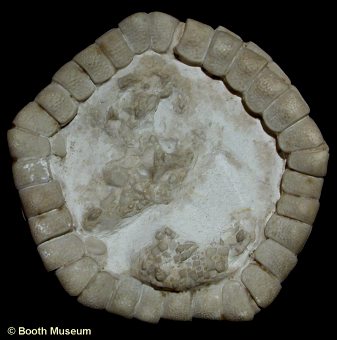 A A |
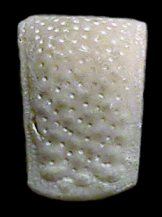 B B |
|
Metopaster hunteri (Forbes) |
A characteristic Metopaster whose profile varies from angular to circular. The superomarginals have a recessed border and a distinctive ornament of intermingled rugosites (small lumps) and pits. Typically only the marginal frame remains articulated. Occurs from the Coniacian to the Early Campanian, but is most common in the Seaford Chalk Formation of Southern England.
 A A |
 B B |
1). (A) Aboral surface of a well preserved individual, (x1.7, White Chalk, Willett collection, Booth Museum, BMB 007827, by kind permission of John Cooper). (B) Typical superomarginal ossicle (x6, HCCMS (Hampshire County Council Museum's Service) collection, stored at Gosport Museum, G.1984.390, by kind permission of Dave Kemp, HCCMS).
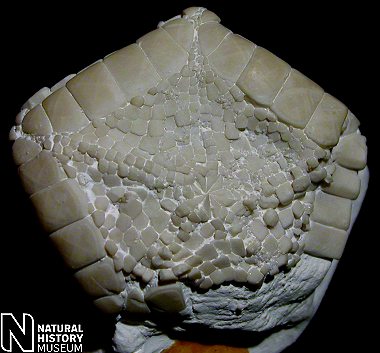
2). Oral surface of an exquisitely preserved specimen, note that the inferomarginal ossicles are virtually smooth except for the recessed border; x3.1, Seaford Chalk, Micheldever, Hampshire, Blackmore Collection, BMNH (British Museum (Natural History) London) E20271. Image © 2005 The Natural History Museum, by kind permission.
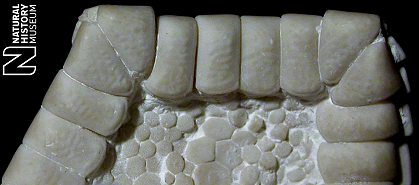 A
A |
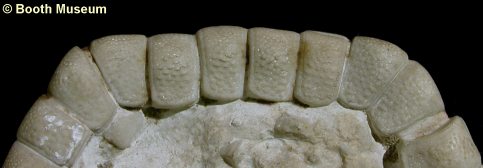 B B |
3). Marginal views of two well preserved individuals viewed aborally; (A) Individual with angular arm-tips, x4.0, Seaford Chalk, Micheldever, Hampshire, Blackmore Collection, BMNH (British Museum (Natural History) London) E20271 (Image © 2005 The Natural History Museum, by kind permission); (B) Individual with rounded arm-tips, x3, White Chalk, Willett collection, Booth Museum, BMB 007827, by kind permission of John Cooper.
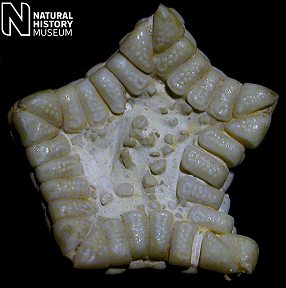 A A |
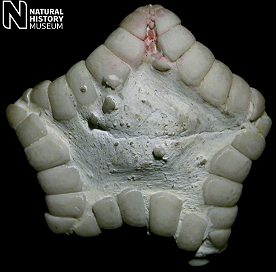 B B |
4). Aboral (A) and oral (B) views of a small but well preserved individual; note the contrast between the ornamented superomarginals and the smooth inferomarginals; x3.0, White Chalk, Kent, BMNH (British Museum (Natural History) London) E13080. Images © 2005 The Natural History Museum, by kind permission.
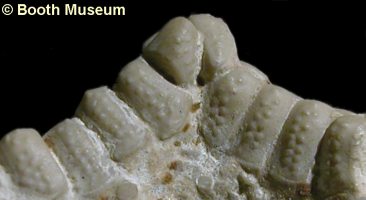
5). Detail of a relatively small individual with angular arm-tips and superomarginals ornamented by a few pronounced rugosites and no obvious pits (x5, White Chalk, Willett collection, Booth Museum, BMB 007824, by kind permission of John Cooper).
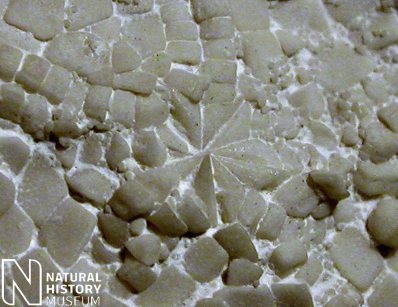
6). Detail of an exceptionally preserved oral surface, with well articulated mouth angle plates; x9.0, Seaford Chalk, Micheldever, Hampshire, Blackmore Collection, BMNH (British Museum (Natural History) London) E20271. Image © 2005 The Natural History Museum, by kind permission.
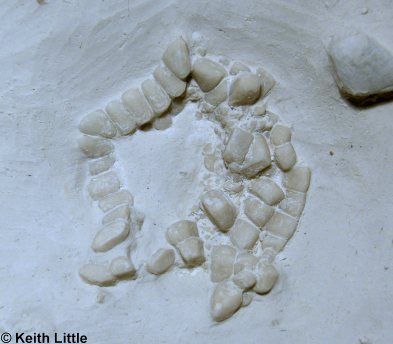
7). Semi-articulated specimen, prepared by reversal to expose the aboral surface (x2.0, Seaford Chalk, Thanet Coast, Kent, in the collection of Keith Little). Image © 2010 Keith Little, by kind permission.
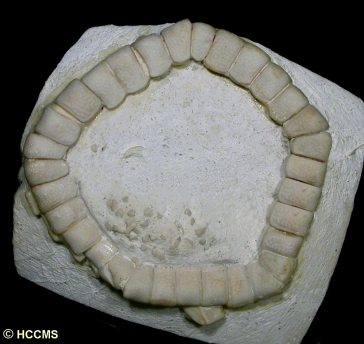 A A |
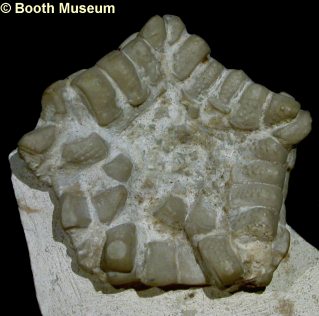 B B |
8). Aboral views of well preserved specimens with contrasting profiles; (A) Typical specimen with only the marginal frame remaining in articulation (likely somewhat reconstructed - note for example the extra ossicle in the top left section of the marginal frame) (x1.7, White Chalk, HCCMS (Hampshire County Council Museum's Service) collection, stored at Gosport Museum, G.1984.992, by kind permission of Dave Kemp, HCCMS); (B) small indivdual with angular arm-tips (x3, White Chalk, Willett collection, Booth Museum, BMB 007824, by kind permission of John Cooper).
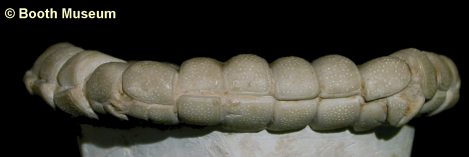
9). Lateral (side) view of a well preserved specimen, note that the ulimate superomarginal is not expanded relative to the other superomarginals, as is typical for most Metopasters (x2.3, White Chalk, Willett collection, Booth Museum, BMB 007827, by kind permission of John Cooper).
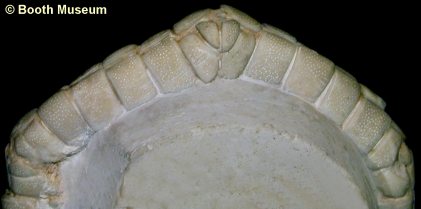 A A |
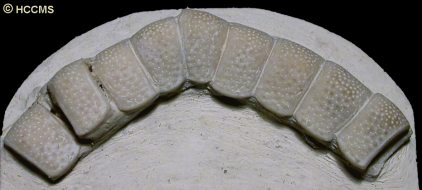 B B |
10). More marginal frames; (A) Oral surface, note that the ultimate superomarginal has few corresponding inferomarginals relative to other Metopasters (x2.2, White Chalk, Willett collection, Booth Museum, BMB 007827, by kind permission of John Cooper); (B) partial frame (x3.0, HCCMS (Hampshire County Council Museum's Service) collection, stored at Gosport Museum, G.1984.390, by kind permission of Dave Kemp, HCCMS).